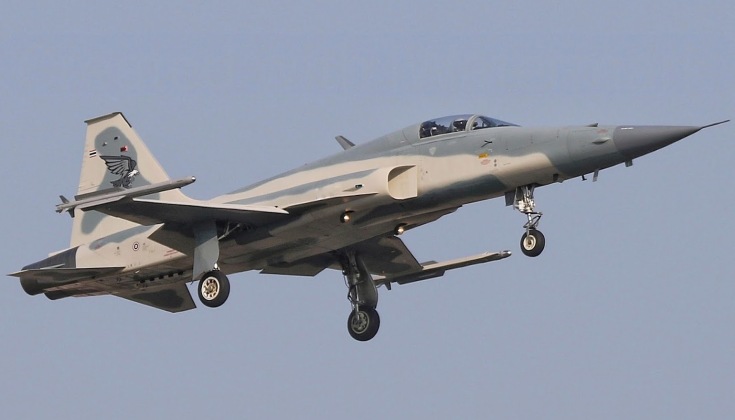On May 31 a U.S. Navy F-5E Tiger II third generation fighter crashed into the sea off Key West, Florida, with the pilot ejecting safely and being recovered by an MH-60S search and rescue helicopter shortly afterwards. Based at Naval Air Station Key West, the fighter belonged to the Fighter Squadron Composite 111 Navy Reserve adversary squadron. It’s loss marked the second for the U.S. Military to an accident in under a month, after an F-16 crashed in South Korea on May 6. Alongside the Navy, the Marine Corps has also continued to operate F-5s under Marine Fighter Training Squadron 401. Moves to expand the F-5 fleet were made in 2019 through acquisitions of second hand airframes that were being retired by the Swiss Air Force due to their perceived value for adversary training. Such training entails F-5 pilots simulate the capabilities of enemy aircraft such as MiG-21s in mock battles against classes in frontline service such as F-35s or F-18Es.
The third generation F-5 is a direct predecessor to the fourth generation F-16 and fifth generation F-35, with all having been designed as lighter and cheaper counterparts to top end heavyweights of their respective times the F-4, F-15 and F-22. The F-5E Tiger II enhanced variant first flew in 1972, just two years before the F-16, and proved popular on export markets with Taiwan alone license producing close to 300. Primary remaining operators include Taiwan, South Korea and Iran, although in the former two they are being replaced by the F-16 Block 70/72 and the FA-50 respectively. The Taiwanese F-5 fleet has proven particularly problematic in recent years, with three lost to accidents in under six months from October 29, 2020. The class is nevertheless considered relatively reliable, and unlike the F-16 and F-35 it notably benefits from engine redundancy due to its twin engine configuration.

The F-5’s exceptionally low operational costs and maintenance requirements have made it highly prized for roles such as aggressor training, and allowed countries such as South Korea to field fighter fleets which are on paper very large by filling multiple squadrons with hundreds of the aircraft. The F-5E Tiger II has seen ambitious upgrades proposed on multiple occasions, as well as a highly ambitious successor developed under the F-20 program, although this failed to gain clients and never entered serial production. The most ambitious upgrade package to have been widely implemented has been the Thai-Israeli F-5TH program, which brought fighters into service from late 2019 integrating AESA radars, a Link-T datalinks and modern beyond visual range missiles – with cannons removed to compensate for the added weight. Another highly ambitious upgrade package was developed by Taiwan, the F-5E Tiger 2000, which including integration of indigenous active radar air to air missiles among other assets, although the first orders for F-16s in 1992 resulted in the program’s cancellation. The low operational costs of the F-5 compared to modern fighter classes like the F-16 has created a strong incentive to upgrade the aircraft, with the U.S. Navy and Marines’ fighters continuing to receive enhancements including the integration of modern ejection seats – something the seats’ producer Martin Baker did not hold back from highlighting when the pilot survived the latest accident.
